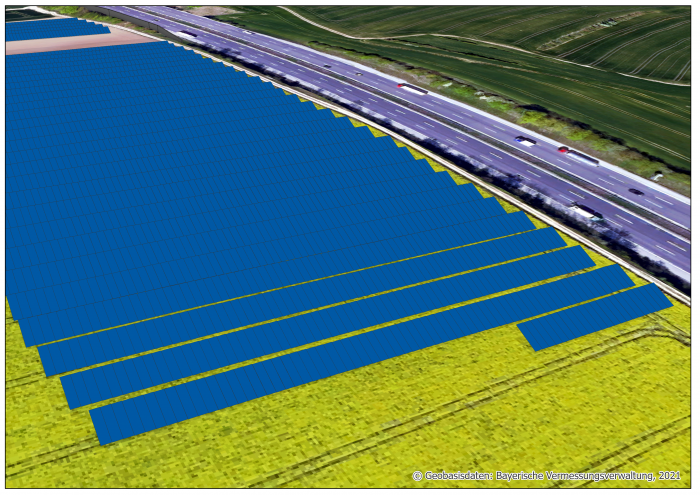According to the German Federal Immission Control Act (BImSchG), light immissions are considered to be harmful to the environment if their nature, extent and duration are such that they are likely to cause hazards, significant disadvantages and/or significant nuisances for the general public or the neighborhood. Light pollution is the glare effects and room illumination caused by direct light sources, e.g. parking lot lighting, neon signs or car headlights, or indirect light sources, e.g. reflections of sunlight on glass facades or photovoltaic plants (PV plants).
Impact studies or legally binding assessment regulations for the evaluation of light pollution are currently not available. Therefore, the LAI light immission guideline (LAI, 2015) is used as a substitute to assess the nuisance effect caused by light pollution.
Since light pollution can cause considerable nuisance to residents, passers-by or road users, model simulations are a suitable tool to avoid and solve problems.
We can provide support and consulting services in relation to the following aspects:
- Glare caused by light reflections on glass facades or photovoltaic systems
- Glare and room illumination by artificial lighting (streetlights, parking lot lighting, advertising lighting or neon signs, etc.)
- Glare from vehicle headlights
- Flicker effects

Fig. 1: 3D representation of an open-space PV plant along a highway

Fig. 2: Luminance distribution of a parking lot lighting system
